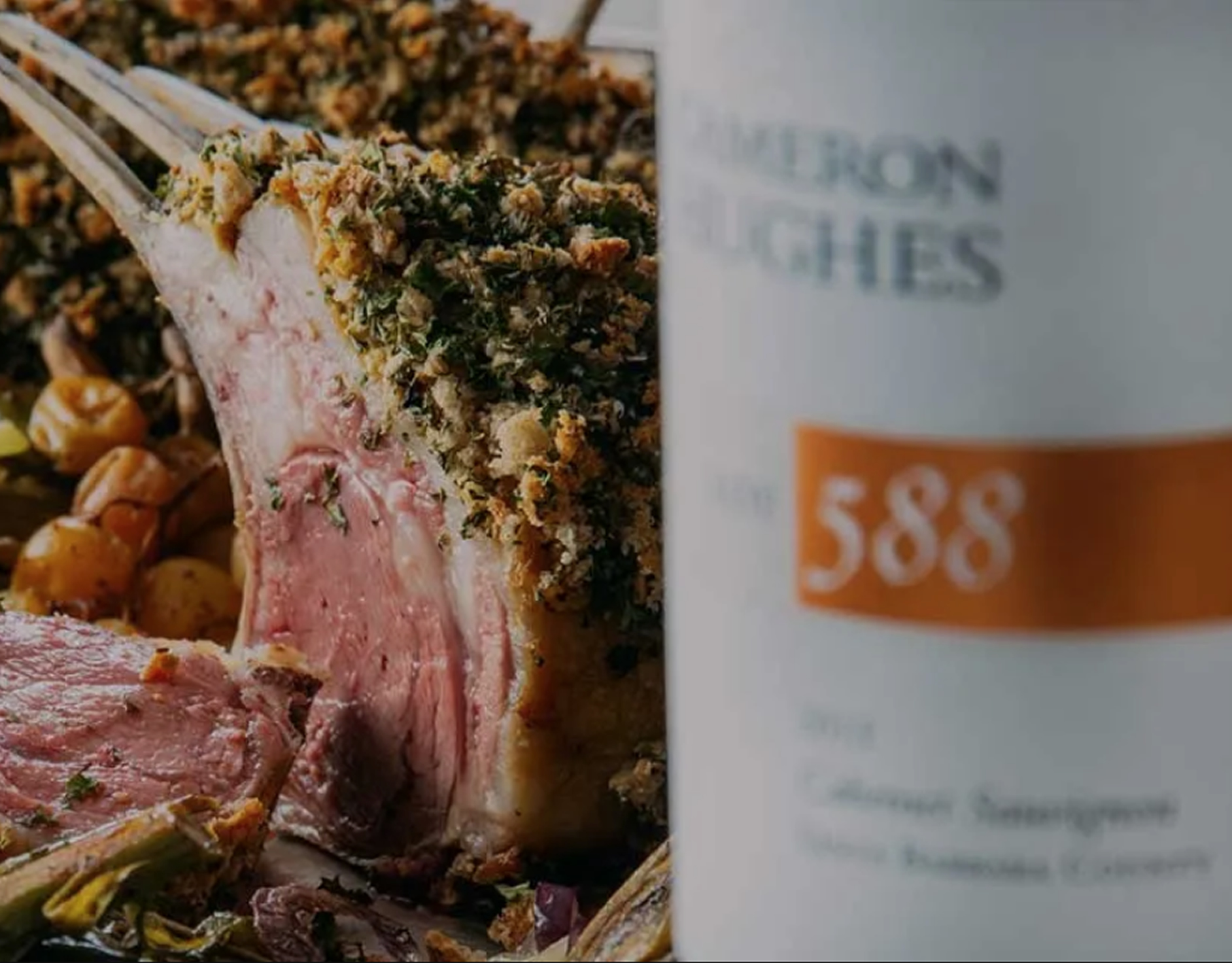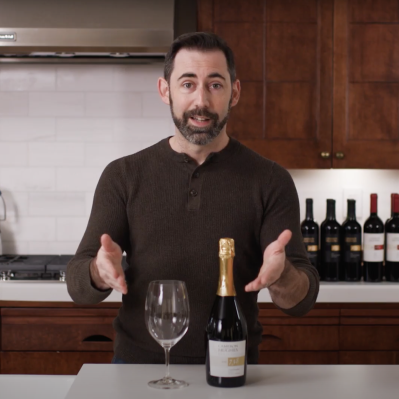From salt, acid, fat, and sweets in your favorite cuisines, to the wines that pair best with dishes that include those ingredients, Certified Sommelier and CHW Tasting Panel guru Chris Lafleur offers sound advice on pairing wine and food.
By CHW Team
By now, if you haven’t seen the Cameron Hughes Wines tasting panel videos featuring sommelier extraordinaire Chris Lafleur, time to check them out!
We caught up with Chris, who is based in Toronto, to talk wine and food pairings. Before you get into our Q&A session below, let us tell you a bit about Chris.
Chris moved to Toronto to pursue Musical Theatre Performance but ultimately made a better living serving and selling wine. He discovered that the world of wines was the perfect blending of his love for craftsmanship, hospitality, and the art of storytelling.
Chris Lafleur
Sommelier
Chris is a sommelier certified by the Court of Master Sommeliers and has worked on the floors of acclaimed Toronto restaurants, including Blueblood Steakhouse, Cibo Wine Bar, and Michelin Starred Don Alfonso 1890 (named the #1 Best Italian Restaurant in the World, outside of Italy).
When he’s not tasting Cameron Hughes wines or working the floor, he’s involved in wine, whiskey, and tequila tastings with the Sommelier Company. He boasts a wealth of knowledge, always served up in a friendly, down-to-earth manner. So, get ready to learn a lot about wine and food pairing.
CHW: Chris, thanks for taking the time to talk to us! Pairing food and wine the way a sommelier knows how to conjure up pairings can seem daunting for most wine lovers. Do you have a quick reference or a cheat-sheet-style guide for those who don’t make a living by pairing food and wine?
Chris Lafleur: There are a couple of very simple rules to start with pairing, and they involve the intention for the pairing: Do I want to cut through the weight of this dish, or do I want to wrap around this dish and complement the flavor?
By cutting through, I mean a dish that languishes on the palate can seem less heavy when you use a wine that cleanses the palate structurally, either with acids or tannins (Like a chicken breast in a heavy saucy that might handle light to medium white wine and break up the more languorous components with a citrus hit).
By wrapping around this dish, I mean to take a dish that is heavy and has components that mimic flavors you can find in wine (Barbecue sauce with rich wine with lots of expressive jammy fruits, for example). From there, it can tend to get very complicated, especially when you’re pairing a 16-course dinner, but there are a few other bullet points I use to start the pairing gears turning:
- High acid White wine with white fish: Fish contain proteins called amines (they make fish smell fishy) and if you introduce high acids to them they become ammonium salts, which are scentless and make fish taste fresher.
- Rich fatty red meat with high tannin red wine: Tannins bind to other molecules (including each other) and fat that lingers on the tongue after a bite of ribeye is swept up by tannins to cleanse the palate, making the next bite better!
- High sugar desserts with HIGHER sugar wine: If you pair a semi-sweet wine with dessert, your palate will calibrate to the sweetest thing and the dessert will overpower your wine, making it taste dry! So crank the sugar up and dig into a chocolate cake with some sweet stuff, like Icewine, Sauternes, or port.
- Salt matches sweet wine well: There’s no such thing as a salty wine (at least no good ones), but a hint of salt goes well with a bit of sweetness if candied salted nuts or popcorn are any indicators. So a wine with a bit of sweetness can balance the dryness of salt.
There are many, many more complicated guidelines going forward (Lamb with Bordeaux, Duck with Burgundy, Barbecue with Zinfandel), but how precise you get on the wine pairing might depend on the depth of your cellar or the proximity of your local sommelier.
CHW: You’re a fan of Italian cuisine. What’s your favorite Italian food pairing for white? For red? Talk about the wine and the dish.
Chris: Oh boy, so, one of my favorite plates of pasta is cacio e pepe, which sounds simple (cheese and pepper on spaghetti), but is hard to master and life-changing when done right. I was working on a pairing for this dish when Krug, this great champagne house, declared pepper is the ingredient for the year it will be doing pairings with. So, of course, we start to experiment, and Krug is a somewhat expensive pairing for a dish like this. At home, when I made the dish next, I followed this as a guideline and settled on something much more within my grasp: Franciacorta!
Franciacorta is a traditional method of sparkling wine from northern Italy in Lombardia, and it was just a delicious pairing where everything rich and spicy about the cacio e pepe was complemented by and cut through with a glass of rich sparkling Franciacorta. For red, I’m a bit simple here, I love a good steak, and Steak Fiorentina is just such a remarkable dinner. So in keeping with pairing by region, I like a good Chianti Classico with it, or wine based on Sangiovese. I like the way the tannins go with the meat, the savory herb notes on the wine matching the herbs on the dish, and its believed that Sangiovese may translate to the “Blood of Jove,” so it’s hard to turn down drinking the blood of the gods.
CHW: We know you’re also a big fan of Korean street food — we imagine there’s typically a lot of spice and heat in those dishes, so where do you land on pairing wine with Korean street food?
Chris: That’s a tough one, Korean Street Food normally is sold with things like Soju or light beer, and I think it’s tough to make the case to break up that pairing. Having a cold beer with Tteok-bokki (spicy stirred fried rice cake) takes the heat off perfectly, and soju with Mandu (pork dumplings) is perfect. But with dishes like Mandu that go well with soy sauce, you could pair an older wine with that, like a Reserva or Gran Reserva Rioja. They naturally show a bit of age with a hint of balsamic or dried tea leaves, and that’s a great accompaniment to the sauce and dumpling. I’d also say for sweeter desserts like Hotteok (sugar-stuffed pancakes), you could pair a great dessert wine with it, like a Madeira, to match the cooked sugar inside. Would it look a little strange to have a stemmed glass outside a street food booth? Wine has this aristocratic vibe to it that is generally misplaced, so probably. I bet it would still be a wicked pairing, though.
CHW: Let’s talk French food. The classic dish of steak frites, or roasted chicken and potatoes, and anything that has the word “truffle” in it, comes to mind. Do I always need to pair a red with my steak frites? Or a white with my roast chicken? And how do white and black truffles mix it all up in, say, a creamy pasta dish? Plenty to unpack here, so guide us through each. It would be great to get a classic and non-classic pairing for these.
Chris: Well, steak frites, it’s so classically a red wine dish, all the meat, and fat. My first thought is Bordeaux, and I think wine from the Right Bank would be preferable. They are generally plusher on the palate (with a little more Merlot in the blend), so it’s a richer wine with some steak au jus. To go a little off the beaten path, it would be a great match with Cahors as well, a red wine made primarily of Malbec further upriver from Bordeaux—a great wine also with steak, the same plushness with a little more structure.
Roasted Chicken and potatoes to me sound like a great pairing with Burgundy. I think the classic pairing would be White Burgundy, and I’d suggest something from the Cote de Beaune to give a little push of round nutty and buttery character. I’d also suggest that Red Burgundy would be the non-classic pairing with it, but with the right herbs on the chicken, some structured Pinot Noir-based wines would absolutely sing, like a Pommard or Volnay.
As far as truffles, I like them when they’re crusting a rich terrine to add a great depth of flavor and an earthy note. Whether they are white or black truffles, I always associate Nebbiolo to be the best pairing with them, like Barolo or Barbaresco. They need age, though, for the wines to be approachable and to really develop complementary notes, so ideally, wines at the 10-year-plus mark.
Now, lastly, to the question, do I always need to follow these rules? Or can you pair something you just happen to like? Absolutely! Everybody tastes things differently; we all have different pH and bacteria balances in our mouths, so no two people experience the same flavors or chemical components exactly the same. Personal preference also plays a huge part in your actually liking what goes with your food. So above all these rules, drink something you actually like before you take a sommelier’s advice as the gospel truth.
CHW: We need to talk about dessert. Is it best to pair sweet wine with a sweet dessert? Or can we break the rules? And if we go for a cheese course for dessert, with hard and soft cheeses, do you have a go-to pairing for that?
Chris: Okay, so with dessert, I think if you are going to pair sweet wine with a dessert, the only rule is that the wine has to be sweeter than the dessert. This is like I said before, if the dessert overpowers the wine, you can’t taste the sugar. But can you have dry wine with dessert? For sure! You can add nice dry Riesling with Key Lime pie to match the flavors, or you could use something like Viognier to match something more delicate and floral or peach driven. As for Cheese, I like to pair older hard cheeses with nutty oxidative white wines like Sherry or old White Burgundy and soft white cheeses with great dry palate cleansing Champagne and dry white wines. Despite some pairing guidelines, I generally don’t like reds with cheese unless it’s something old with low tannins, as I find the structures clash.
Watch Chris taste through new releases from Cameron Hughes Wine.


